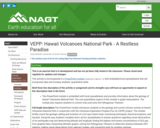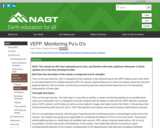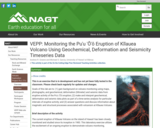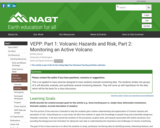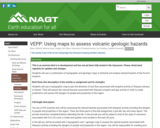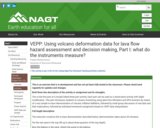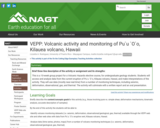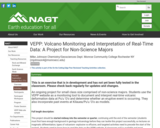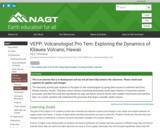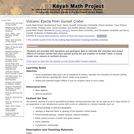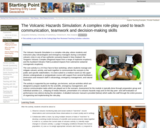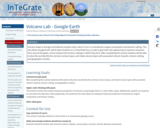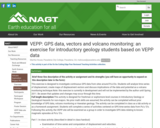
Brief three-line description of the activity or assignment and its strengths (you will have an opportunity to expand on this description later in the form):
This exercise is designed to investigate continuous GPS data from sites around Pu'u'Oo. Students will analyze time series of displacement, create maps of displacement vectors and discuss implications of the data and potential as a volcano monitoring technique.Note: this exercise is currently in development and will not be implemented by the author until Spring 2011. Be aware that updates and changes may occur through this time.
Full length description:This activity is designed for freshman or sophomore level courses in Introductory Geology or Geological Hazards for non-majors. No prior math skills are assumed; the activity can be completed without prior knowledge of GPS data, volcano monitoring or Hawaiian geology. The activity can be completed in class as a lab activity or as a homework assignment. Students will complete a series of activities centered on GPS time-series data from Pu'u 'O'o. Following this activity, the VEPP site will be examined as a group in order to investigate GPS data relating to known magmatic episodes at Pu'u 'O'o.
Part 1: In-class activity (described in detail in class handout)
Examination of time series and computation of displacement and velocities.
Graphing of displacement vectors for identified time intervals and determination of actual motion vectors.
These activities are interspersed by guided questions.
Part 2: In-Class web-based evaluation of VEPP data.
Think-Pair-Share activity among whole class. Once students have looked at the Pu'u 'O'o data described in part 1 of the activity, the class as a whole will look at data corresponding to either up to the minute activity or known events in the past. Using skills they have developed in the activity, they will work in small groups to interpret the data on the fly, using the work they have done previously to guide them. This part of the activity will provide the basis for discussion and explanation of the activity over-all.
(Note: this resource was added to OER Commons as part of a batch upload of over 2,200 records. If you notice an issue with the quality of the metadata, please let us know by using the 'report' button and we will flag it for consideration.)
- Subject:
- Biology
- Life Science
- Material Type:
- Activity/Lab
- Provider:
- Science Education Resource Center (SERC) at Carleton College
- Provider Set:
- Teach the Earth
- Author:
- Martha House
- Date Added:
- 03/15/2022
